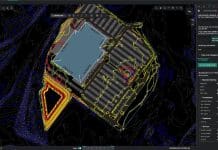CDM2015 will have special significance for smaller construction projects and the appointment of the Principal Designer as explained by Jonathan Moulam of The Association for Project Safety
The Construction (Design & Management) Regulations 2015 came into force just over a year ago in April 2015 with the transitional period ending in October 2015. These new regulations are the latest version of CDM and include significant changes, not only to duty holders but also when these key duty holders need to be formally appointed. This has special significance for smaller projects who now need to consider the appointment of the new roles of Principal Designer and Principal Contractor.
All construction projects have always fallen under the umbrella of the regulations, but many felt that the duties did not apply unless a project was notifiable to the HSE. This was never the case and still isn’t. However, with the change to CDM2015, the trigger for the formal appointment of duty holders is now when there is likely to be more than one contractor in the construction phase.
It is worth noting that if the construction project only has one contractor, then designers, the Client and the Contractor all have duties under the regulations.
The changes have also brought ‘domestic projects’ under the umbrella of CDM where previously (under CDM2007) they were not notifiable and did not require the appointment of a CDMC or Principal Contractor. Under CDM 2015, if there is more than one contractor, a domestic project will have a Principal Designer and a Principal Contractor, by written appointment or default and the Client duties pass to the Principal Contractor. Notification as a trigger has now been replaced by “more than one contractor” and this is where the impact on smaller and micro commercial projects is being felt, as they now need to appoint these new roles.
It is important from the outset to understand what these regulations aim to achieve. The regulations sit under overarching legislation – the Health and Safety at Work Act 1974 – and the intent is to ensure improved consideration of health and safety issues when construction projects are undertaken. This means that during the design phase of a project, designers need to identify any significant risks that their designs may cause those involved in the construction, maintenance, repair and future demolition of the work. It is the new role of Principal Designer that makes sure that this occurs. The role also ensures that the various designs involved are coordinated to ensure health and safety during all design phases, not just design taking place before the appointment of the Principal Contractor. Design often occurs while construction activity is taking place, so the Principal Designer role will continue into the construction phase. The role of the Principal Contractor is to manage the health and safety risks during construction. They need to take account of the significant risks during the construction phase and during the design phase. They also need to consider the risks created by the surrounding environment; site location, topographical characteristics, time of year, etc.
Who can be a Principal Designer?
The Principal Designer must be a Designer, appointed in writing by the Client as Principal Designer (an e-mail will do) with control over the Health and Safety elements of the Pre-Construction Phase. One of the Design Team, perhaps the Lead Designer may be best for the role, but the Principal Designer does not have to be a Designer carrying out the technical design on the project. The regulations have a sensible degree of flexibility built in to cater for the multi-faceted construction industry where virtually every project is unique. In common with Designers and Contractors, a Principal Designer must not accept an appointment to a project unless they and/or their organisation have sufficient skills, knowledge, experience, and organisational capability to undertake the role.
Delivering the role of the Principal Designer
The duties of the Principal Designer need to be proportionally undertaken for every Principal Designer appointment for every construction project. “Proportionally undertaken for every project….” means the Principal Designer has to undertake all of their duties, but depending on the size and complexity of the project, complying with the individual duty may take either a few hours of resource or it may take days.
Documentation
The Principal Designer role involves a set of appropriate documentation.
These are:
• Client Brief;
• Resource schedule;
• Pre-Construction Information;
• Design Risk Schedules;
• Health and Safety File.
One of the most important aspects of the role of Principal Designer is to manage the process of identifying significant residual Health and Safety hazards with all the other Designers. This can be done by using Design Risk Schedules or Registers. The Principal Designer should make sure that Designers contribute to the agreed project Design Risk Management method (using a consistent proforma). Designers must talk, communicate by other means and keep all appropriate parties in the loop. They must also provide information about their design for construction and the Health and Safety File.
And finally…
I would recommend reading the L153 (Managing Health and Safety in Construction) published by the HSE. However, the most important thing you can do is to manage health and safety from day one of your project. This will make sure risks are identified, and solutions are agreed early on. This is going to make sure your project runs smoothly; saving a lot of time and money. ■
. . . . . . . . . . . . . . . . . . . . . . . . . . . . . . . . . . . . . . . . . . . . . . .
Jonathan Moulam
The Association for Project Safety
Tel: 0131 442 6600






![[VIDEO]What to expect when you’re inspecting: Using DorTrak for fire door inspections](https://www.pbctoday.co.uk/news/wp-content/uploads/2025/02/maxresdefault-218x150.jpg)






